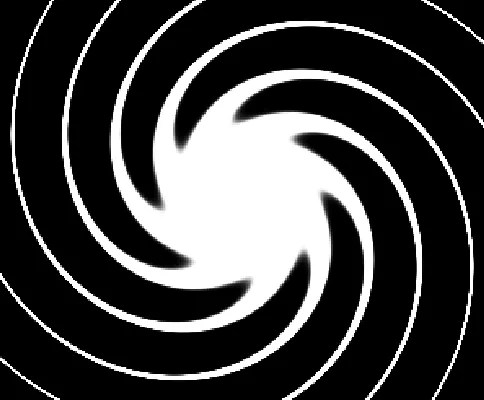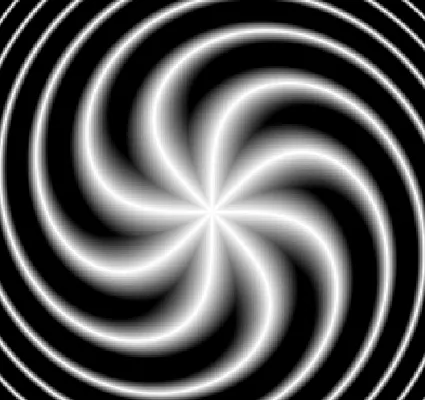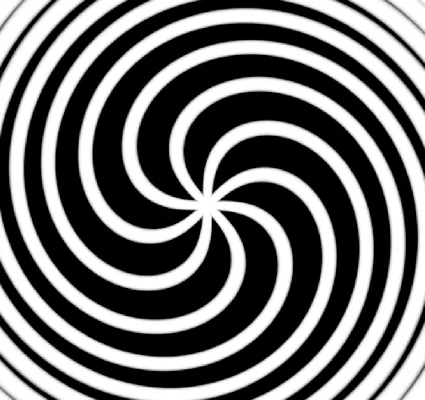我正在尝试使用MATLAB生成一些计算机生成的全息图。我使用等间距网格初始化空间网格,并获得了以下图像。
这种图案有点符合我的需求,除了中心区域。条纹应该是锐利但模糊的。我认为这可能是网格的问题。我尝试在极坐标下生成网格,然后使用MATLAB的pol2cart函数将其映射到笛卡尔坐标中。不幸的是,它效果并不好。有人建议使用细网格。这也行不通。我认为如果我能生成一个螺旋网格,也许问题就可以解决。此外,螺旋臂的数量通常是任意的,有人能给我一些提示吗?
我附上了代码(我的最终项目并不完全相同,但存在类似的问题)。
这种图案有点符合我的需求,除了中心区域。条纹应该是锐利但模糊的。我认为这可能是网格的问题。我尝试在极坐标下生成网格,然后使用MATLAB的pol2cart函数将其映射到笛卡尔坐标中。不幸的是,它效果并不好。有人建议使用细网格。这也行不通。我认为如果我能生成一个螺旋网格,也许问题就可以解决。此外,螺旋臂的数量通常是任意的,有人能给我一些提示吗?
我附上了代码(我的最终项目并不完全相同,但存在类似的问题)。
clc; clear all; close all;
%% initialization
tic
lambda = 1.55e-6;
k0 = 2*pi/lambda;
c0 = 3e8;
eta0 = 377;
scale = 0.25e-6;
NELEMENTS = 1600;
GoldenRatio = (1+sqrt(5))/2;
g = 2*pi*(1-1/GoldenRatio);
pntsrc = zeros(NELEMENTS, 3);
phisrc = zeros(NELEMENTS, 1);
for idxe = 1:NELEMENTS
pntsrc(idxe, :) = scale*sqrt(idxe)*[cos(idxe*g), sin(idxe*g), 0];
phisrc(idxe) = angle(-sin(idxe*g)+1i*cos(idxe*g));
end
phisrc = 3*phisrc/2; % 3 arms (topological charge ell=3)
%% post processing
sigma = 1;
polfilter = [0, 0, 1i*sigma; 0, 0, -1; -1i*sigma, 1, 0]; % cp filter
xboundl = -100e-6; xboundu = 100e-6;
yboundl = -100e-6; yboundu = 100e-6;
xf = linspace(xboundl, xboundu, 100);
yf = linspace(yboundl, yboundu, 100);
zf = -400e-6;
[pntobsx, pntobsy] = meshgrid(xf, yf);
% how to generate a right mesh grid such that we can generate a decent result?
pntobs = [pntobsx(:), pntobsy(:), zf*ones(size(pntobsx(:)))];
% arbitrary mesh may result in "wrong" results
NPNTOBS = size(pntobs, 1);
nxp = length(xf);
nyp = length(yf);
%% observation
Eobs = zeros(NPNTOBS, 3);
matlabpool open local 12
parfor nobs = 1:NPNTOBS
rp = pntobs(nobs, :);
Erad = [0; 0; 0];
for idx = 1:NELEMENTS
rs = pntsrc(idx, :);
p = exp(sigma*1i*2*phisrc(idx))*[1 -sigma*1i 0]/2; % simplified here
u = rp - rs;
r = sqrt(u(1)^2+u(2)^2+u(3)^2); %norm(u);
u = u/r; % unit vector
ut = [u(2)*p(3)-u(3)*p(2),...
u(3)*p(1)-u(1)*p(3), ...
u(1)*p(2)-u(2)*p(1)]; % cross product: u cross p
Erad = Erad + ... % u cross p cross u, do not use the built-in func
c0*k0^2/4/pi*exp(1i*k0*r)/r*eta0*...
[ut(2)*u(3)-ut(3)*u(2);...
ut(3)*u(1)-ut(1)*u(3); ...
ut(1)*u(2)-ut(2)*u(1)];
end
Eobs(nobs, :) = Erad; % filter neglected here
end
matlabpool close
Eobs = Eobs/max(max(sum(abs(Eobs), 2))); % normailized
%% source, gaussian beam
E0 = 1;
w0 = 80e-6;
theta = 0; % may be titled
RotateX = [1, 0, 0; ...
0, cosd(theta), -sind(theta); ...
0, sind(theta), cosd(theta)];
Esrc = zeros(NPNTOBS, 3);
for nobs = 1:NPNTOBS
rp = RotateX*[pntobs(nobs, 1:2).'; 0];
z = rp(3);
r = sqrt(sum(abs(rp(1:2)).^2));
zR = pi*w0^2/lambda;
wz = w0*sqrt(1+z^2/zR^2);
Rz = z^2+zR^2;
zetaz = atan(z/zR);
gaussian = E0*w0/wz*exp(-r^2/wz^2-1i*k0*z-1i*k0*0*r^2/Rz/2+1i*zetaz);% ...
Esrc(nobs, :) = (polfilter*gaussian*[1; -1i; 0]).'/sqrt(2)/2;
end
Esrc = [Esrc(:, 2), Esrc(:, 3), Esrc(:, 1)];
Esrc = Esrc/max(max(sum(abs(Esrc), 2))); % normailized
toc
%% visualization
fringe = Eobs + Esrc; % I'll have a different formula in my code
normEsrc = reshape(sum(abs(Esrc).^2, 2), [nyp nxp]);
normEobs = reshape(sum(abs(Eobs).^2, 2), [nyp nxp]);
normFringe = reshape(sum(abs(fringe).^2, 2), [nyp nxp]);
close all;
xf0 = linspace(xboundl, xboundu, 500);
yf0 = linspace(yboundl, yboundu, 500);
[xfi, yfi] = meshgrid(xf0, yf0);
data = interp2(xf, yf, normFringe, xfi, yfi);
figure; surf(xfi, yfi, data,'edgecolor','none');
% tri = delaunay(xfi, yfi); trisurf(tri, xfi, yfi, data, 'edgecolor','none');
xlim([xboundl, xboundu])
ylim([yboundl, yboundu])
% colorbar
view(0,90)
colormap(hot)
axis equal
axis off
title('fringe thereo. ', ...
'fontsize', 18)


